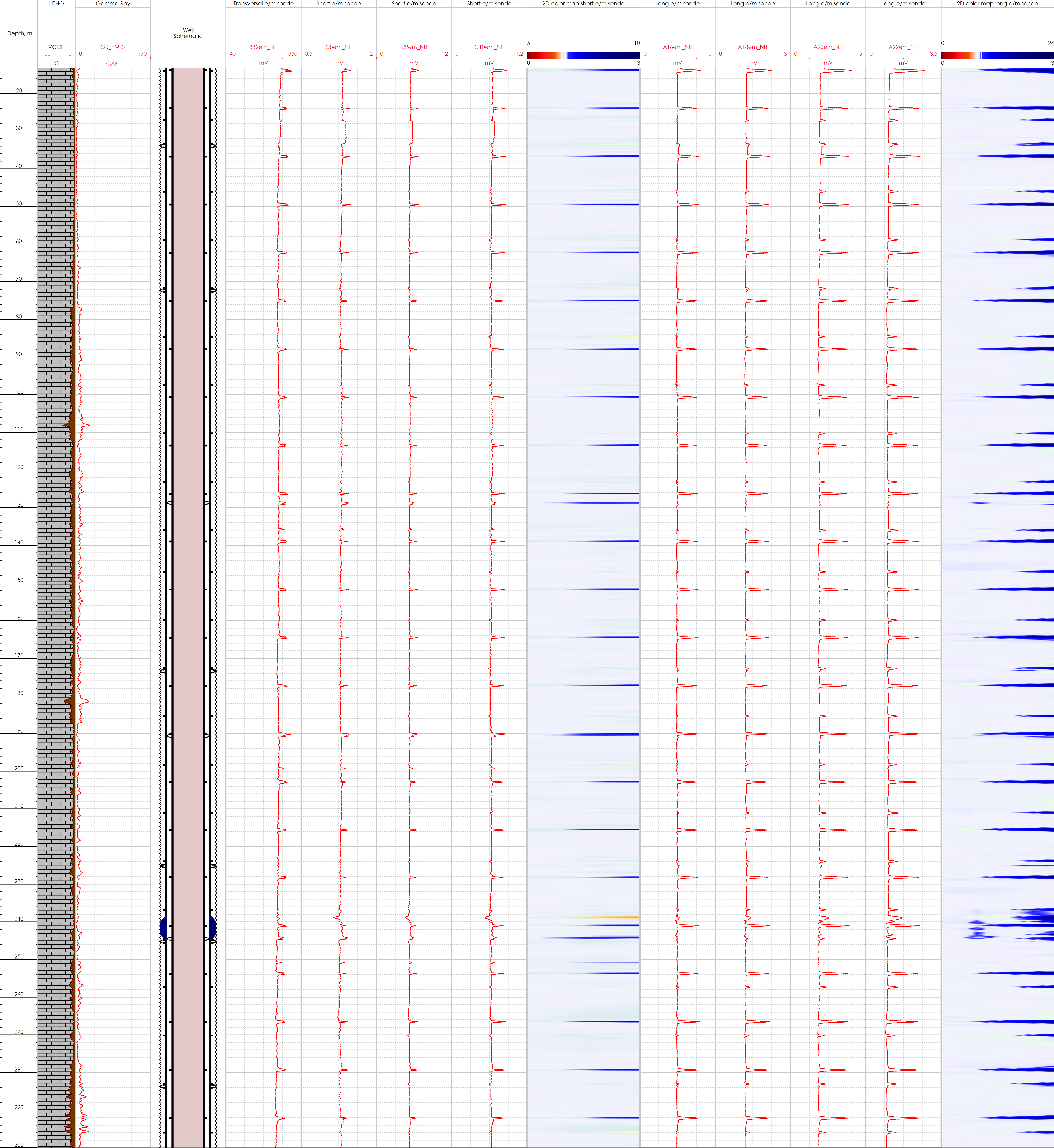Integrity Challenge
Having an accurate knowledge of all casing accessories can be critical for operations such as perforating, window milling for sidetracking and casing milling for final abandonment. In many situations centralizers can be free floating when run in hole so the exact depth is unknown and the casing tally may only record which joint the centralizer was on. Additional casing accessories such as stop collars and stage collars can also be identified and their depths accurately recorded.
Corrosion Logging Result
One example when corrosion logging was done in a well where casing centralizers were identified is shown below:
This is a newly drilled vertical well which was planned to be a beam pump (BP) oil producer. The well was completed with a 9 5/8” surface casing and a 7” production casing. The 9 5/8” casing was cemented in stages. The first stage cement was pumped through the casing float collar and second stage through a multi-stage packer. This cementing design improves the quality of cement placement, this was confirmed by the cement bond log (CBL). The 7” casing was cemented through the casing float collar with the top of cement at 200 m.
EMDs corrosion logging was conducted before the completion string was run, both casing strings were run with centralizers. The final casing tally provided by the rig recorded the joint numbers where centralizers were placed however the exact depth of location was not recorded. The main objective of the log was to identify the location of all the centralizers in both pipes as this information can be useful for future operations. For example, if a sidetracking is required knowing the exact location of the centralizers can help to select the sidetrack depth where no centralizers are present which will make the milling operation easier.
The EMDs log data was able to identify all the casing centralizers, confirming the numbers and their exact depths. The log data showed that the 9 5/8” casing had centralizers from surface (first was identified at depth 34 m followed by a centralizer at 72 m), most of them were located just below the casing couplings. The distance between the centralizers varied from 38 m to 70 m. In total, 15 centralizers were identified on the 9 5/8” casing whereas the final casing tally had recorded 17 centralizers.
The multi-stage packer assembly in the 9 5/8” casing was identified at 237-245 m which corresponded to the final casing tally report.
The EMDs data indicated that most of the 7” casing centralizers were positioned adjacent to the casing couplings (above and below). In total, 20 centralizers were identified which corresponded with the final casing tally. Centralizers were distributed equally across the entire casing with an average distance between centralizes of 62-65 m. In addition, some of the 7” casing centralizers had additional accessories which could possibly be stop collars located 8-10 m apart and were not recorded in the final casing tally.
All case studies
Looking for more information?
Get in touch with us and our representative will get back to you
Contact Us



